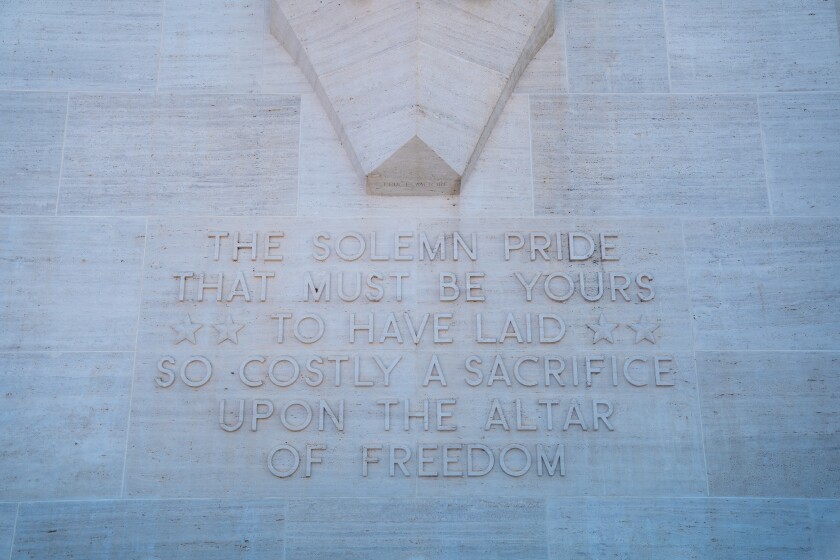A barren expanse of volcanic crater, the Punchbowl National Cemetery, is designated as a national cemetery of the Pacific

The Honolulu Memorial and the National Memorial Cemetery of the Pacific, also known as "Punchbowl" Memorial Cemetery, were built to honor the sacrifices and achievements of American armed forces during World War II, the Korean War and the Vietnam Wars, says the National Cemetery Administration's website. Situated in the heart of Honolulu, it was established by the American Battle Monuments Commission or ABMC, says the website.
According to the U.S. Department of Veterans Affairs website, the memorial became one of Oahu's popular tourist destination. More than 5 million visitors come to the cemetery each year to pay respects to the military personnel who died during the wars and enjoy a panoramic view of the city from the memorial, says the website.
The National Cemetery Administration's website says the crater where the cemetery is was formed during the Honolulu period of secondary volcanic activity. It says the crater resulted from the ejection of hot lava through cracks in the coral reefs, which extended to the foot of the Koolau Mountain Range. The crater became a "Puowaina" or "Hill of Sacrifice" for native Hawaiians, says the website. The altars were made for human sacrifices to pagan gods and killed violators around the island, it adds.

The website said Punchbowl became a settlement in the 1880s and a rifle range for the Hawaii National Guard in the 1930s. After World War II, the website says the governor of Hawaii donated the crater to be a burial site for locals, and it became a memorial cemetery for soldiers and sailors in 1949.
The expansive grounds of a 116-acre crater, according to Pearl Harbor Tours' website, consists of 28,778 members of the U.S. Armed Forces whose remains were not recovered, identified, and are listed as missing in action or buried at sea. The cemetery's guide for visitors brochure says the memorial consists of 10 courts of the missing, five on each side of the monument staircase and a Court of Honor at the top of the stairs containing a non-sectarian chapel and two map galleries.
The website also explained the significance of "Lady Columbia," also known as the Lady Liberty or Lady Justice, at the top of the courtyard. It says the 30-foot statue represents all grieving mothers who lost their sons in the wars. It also says the inscription below the statue, which echoes the words from Abraham Lincoln addressing Mrs. Bixby who lost her five sons during the Civil War. It says, "THE SOLEMN PRIDE THAT MUST BE YOURS TO HAVE LAID SO COSTLY A SACRIFICE UPON THE ALTAR OF FREEDOM."

The memorial consists of extensive hallways on either side showcasing 15 huge mosaic panels with illustrative maps showing the battle of the Pacific during WWII, Korea and Vietnam. Each mosaic is filled with information about the wars and battles in a particular country as well as the achievements of the servicemen and women who were part of the war and names of places are carved, which hold notable significance in the proud record of the U.S. Armed Forces, says the website.
